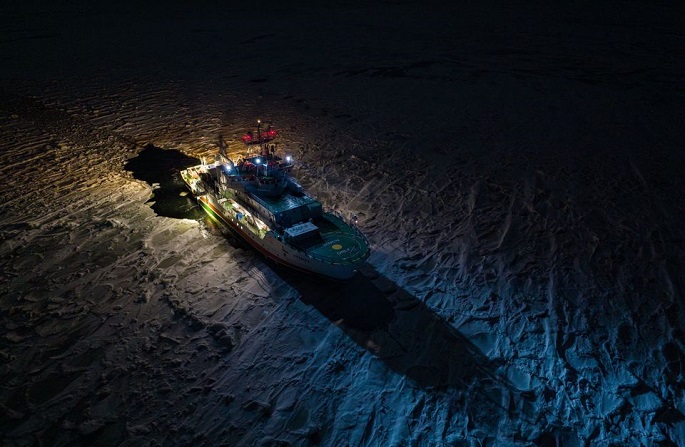O2 levels in Baltic sea on wane, phosphate levels rise
Published : 11 Apr 2024, 01:00
The oxygen problems of the main basin of the Baltic Sea continue and that phosphate levels in the surface layer have increased, according to the annual winter monitoring cruise of the marine research vessel Aranda.
The oxygen situation in the main basin of the Baltic Sea remained poor while the northwestern part of the main basin was powerfully stratified and water more than 60 metres beneath the surface was without oxygen, said the Finnish Environment Institute (SYKE) in a press release on Wednesday referring to the monitoring.
At the northeastern edge of the basin oxygen-free water was found only at depths below 90–95 metres.
The phosphate level in the surface layer was higher than usual for wintertime. The likely cause of this was the mixing of masses of water caused by storms.
The oxygen situation in the Gulf of Finland was relatively good, but the phosphate level in the surface layer was higher than at any time in the past 30 years.
Salinity in the surface layer of the Gulf of Finland had risen to record heights and at most measuring points phosphate levels were the highest ever recorded.
Record-high phosphate levels were now measured in a significantly wider area than last year. The rising phosphate level is caused by nutrient-rich masses of water flowing into the Gulf of Finland and mixing there.
However, the mixing of water layers improves the oxygen situation in deeper water, and low oxygen levels were found only in the western end of the Gulf of Finland.
Levels of dissolved nitrogen and phosphorus measured in parts of the Archipelago Sea set new wintertime records.
The likely cause of the exceptionally high concentrations was nutrient-rich water flowing from the Gulf of Finland into the Archipelago Sea.
Oxygen levels in deeper parts of the Bothnian Sea have decreased and nutrient levels of the deep water are high in places. Nutrient levels began to rise at the start of this century and the process continues.
Oxygen and nutrient levels in Kvarken and the Bothnian Bay were at the normal wintertime levels.
An influx of saltwater entered the Baltic Sea through the Straits of Denmark in December 2023, improving the oxygen situation in deep water off the island of Bornholm.
The December saltwater inflow was moderate, with a volume of about 80 km3. Its effects were significantly weaker than those of the inflow that occurred in 2014, with a volume of 300 km3. The effects of the saltwater inflow will probably be seen in the northern part of the main basin of the Baltic Sea in the late spring or early summer.
Aranda’s winter monitoring cruise extended to the Gulf of Finland, the Archipelago Sea, the northern part of the main basin of the Baltic Sea, the Åland Sea, the Bothnian Sea, Kvarken, and the Bothnian Bay. In addition to levels of nutrients and oxygen, information was collected on matters such as hazardous chemicals and underwater noise.
Noise monitoring showed an increase in low-frequency noise in the Gulf of Finland and in the northern part of the main basin of the Baltic Sea.
Low-frequency noise inflicts stress on fish and shellfish, for example, and disturbs organisms that use sound in communication and catching prey.


